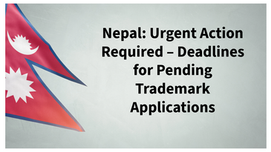
Introduction
Copyright is a bundle of rights vested with the original creator or author of a literary, artistic, dramatic, musical and cinematographic work. Copyright work also includes sound recordings and computer softwares & programmes. These bundle of rights are exclusive rights of the Author to right to sell or reproduce the work in which copyright subsists and commercially exploit the same by other means viz. communication to the public, adaptation and translation of the work, assignment or license. The advancement of print, audio-visual and digital media necessitated the need for a statute to define the rights and remedies related to copyright. At present the Copyright of an author is protected by the Copyright Act, 1957 which was last amended in 1999. The existing Act is proposed to be amended by Copyright Amendment Bill 2010, which is in the pipeline and may be enacted soon.
The History of Copyright dates back to 1914, when the Indian Copyright Act 1914 was enacted, which was primarily based on the U.K. Copyright Act. Since the UK laws did not fit into the changed constitutional status of India, the copyright Bill 1957 was introduced in Indian Parliament. The Copyright Act, 1957 received assent of the President of India on 4th June 1957 and came into effect from 21st January 1958. This Act has been amended five times since then, i.e., in 1983, 1984, 1992, 1994, 1999 and 2012. The Copyright (Amendment) Act, 2012 is the most substantial.
The Indian Copyright Act today is in conformity with most international conventions and treaties including Berne Convention of 1886 (as modified at Paris in 1971), the Universal Copyright Convention of 1951 and the Agreement on Trade Related Aspects of Intellectual Property Rights (TRIPS) Agreement of 1995. The Copyright Act, 1957 is also in conformity with the provisions of the Rome Convention of 1961 (Though India is not a member of the Rome Convention). The provisions of the Act is also in harmony with two other new WIPO treaties namely, the Beijing Audiovisual Performers treaty, 2012 and the Marrakesh Treaty to Facilitate Access to Published Works by Visually Impaired or Otherwise Print Disabled Persons, 2013.
The Copyright Rules, 2013 was notified on 14 March, 2013 replacing the old Copyright Rules, 1958. The Rules, inter alia, provide for procedure for relinquishment of Copyright; grant of compulsory licences in the matter of work withheld from public; to publish or republish works (in certain circumstances); to produce and publish a translation of a literary or dramatic work in any language; licence for benefit of disabled; grant statutory licence for cover versions; grant of statutory licence for broadcasting literary and musical works and sound recordings; registration of copyright societies and copyright registration.
Salient Features Of Indian Copyright Law
WORK IN WHICH COPYRIGHT SUBSISTS
Copyright subsists in the following classes of works:
-
Literary works (including computer programmes, tables and compilations including computer literary data bases)
-
Dramatic works
-
musical works
-
artistic works
-
A painting,
-
a sculpture,
-
a drawing (including a diagram, map, chart or plan),
-
an engraving or a photograph
-
A work of architecture; and
-
Any other work of artistic craftsmanship
-
-
Cinematograph films
-
Sound recordings.
First Owner Of Copyright
Ordinarily, author of a work is the first owner of the Copyright therein.
Work :: First Owner
Literary or dramatic work :: The author, i.e., the person who creates the work
Literary or dramatic work made in course of employment or publication in newspaper/magazine or other periodical :: Employer in respect of copyright relating to publication or reproduction.
In all other respect :: The Author
Musical work :: The composer
Cinematograph film :: The producer
Sound recording :: The producer
Photograph :: The photographer
Computer generated work :: The person who causes the work to be created
Photograph taken, painting or portrait drawn or engraving or cinematographic film made for valuable consideration at instance of other person :: Such other person at whose instance the work was performed
Address or speech delivered to public :: Person delivering the speech or on whose behalf the speech is delivered
Work made or published under direction of Public undertaking :: Public undertaking giving the direction
In a Musical Sound Recording the rights may vest in the lyricist who wrote the lyrics, the composer who set the music, the singer who sang the song, the musician (s) who performed the background music, and the person or company who produced the sound recording. Thus it would be advisable that a license is obtained from each and every right owner in the sound recording. This would, inter alia, include the producer of the sound recording, the lyricist who wrote the lyrics, and the musician who composed the music.
Term Of Copyright
Generally copyright lasts for 60 years.
Original literary, dramatic, musical and artistic works: Extends through the course of lifetime of the author and 60-years from the year following the death of the author. In case of joint authorship, the date has reference to author who dies last.
Posthumous Work: 60 years from the demise of the owner ( beginning of the calendar year next following the publication of such work.)
Anonymous and pseudonymous publications: 60 years from beginning of the calendar year following the year of publication.
Photographs: 60 years from the beginning of the calendar year next following the year in which the photograph is published
Work of Government, Public undertaking and International Organisation: 60 years from the beginning of the calendar year next following the year of publication
Cinematographic film: 60 year from the beginning of the calendar year next following the year of the release of the Film
Rights of Copyright Owner
The Copyright owner is authorized to do the following:
1. To produce the work in a material form
2. To publish the work
3. To perform work in public
4. To produce, reproduce, perform or publish any translation of the work
5. To make any cinematograph film, or a record in respect of the work
6. To communicate the work by broadcast by radio, cable or satellite
7. To make any adaptation of the work
8. To do in relation to a translation or any adaptation of the work
Assignment And Licenses
Assignment
Copyright in an existing work or in a future work may be assigned by the owner or the prospective owner, as the case may be, either wholly or partially and either generally or subject to limitations and either for the whole term of the copyright or any part thereof.
An assignment of the copyright must be in writing and signed by the assignor or his duly authorised agent.
In absence of any specific clause in respect of the period of assignment, it shall be deemed to be 5 years from the date of assignment.
Where assignee fails to exercise the rights assigned to him within a period of one year from the date of assignment, the assignment in respect of such right shall be deemed to have been elapsed, unless otherwise provided in the assignment.
Licenses
Owner or prospective owner of the copyright may grant any interest by license in writing.
Compulsory Licence
A petition for compulsory license can be made to the Copyright Board on the grounds that the work is withheld from the public because:-
-
The owner has refused to republish or allow the republication of work or has refused to allow the performance of the work in public.
-
The owner has refused to allow the communication to the public by broadcast of such work or in the case of a sound recording, the work recorded in such sound recording.
For grant of license a proposal has to be advertised in at least one English daily newspaper having circulation in major cities. Thereafter an application on above grounds and with a copy of said advertisement has to made before Copyright board.
The board after holding prescribed inquiry my direct the registrar to grant the license subject to payment of royalty and conditions as may be decided by the Board.
License to Produce Translation
Any person may apply to produce and publish a translation of literary or dramatic work after period of seven years from first publication of work
An application can be made after three years in case of Literary or dramatic work other than an Indian work for translation in any language in general use in India for purpose of teaching scholarship or research.
In case such translation is in language not in general use in any developed country, the application can be made in a period of one year.
Broadcaster's Rights
- Every Broadcasting Organisation has a special right known as 'Broadcast Reproduction Right' in respect of its broadcasts.
- The term of Broadcast reproduction right is 25 years from the year in which broadcast was made.
Performers's Rights
- Every performer has a special right known as the "Performer's right in relation to such performance"
- The term of Performer's right is 50 years from the year in which the performance was made.
Infringement
The best test to determine whether or not there has been a violation of Copyright is to see if the reader, spectator or the viewer after having read or seen both the works is clearly of the opinion and gets an unmistakable impression that the subsequent work appears to be a copy of the original.
Infringement can be broadly classified into two:-
1. Primary infringement;
2. Secondary infringement.
Primary infringement deals with the real act of copying, while secondary infringement deals with other kinds of dealing like selling the pirated books, importing etc.
Remedies
The following remedies are available to the owner of the Copyright on infringement.
- INJUNCTION
- DAMAGES
- CONTRACTUAL REMEDIES.
- CIVIL as well as CRIMINAL Remedies:
A. CIVIL REMEDIES:
Civil remedies for copyright violation include
-
INTERLOCUTORY INJUCTIONS: The classic requirements for the grant of interim injunction are:
Prima facie case
Balance of Convenience; and
Irreparable injury
-
PECUNIARY REMEDIES: Under sections 55 and 58, the plaintiff can seek recovery of all three remedies, namely (a) account of profits (b) compensatory damages and (c) conversion damages which are assessed on the basis of value of the article converted.
B. CRIMINAL REMEDIES:
Criminal remedies for copyright violation include:
-
Punishment through imprisonment which, under Indian law, may not be less than six months but which may extend to three years;
-
Fines which, under Indian law, shall not be less than Rs.50.000. and which may extend to Rs.200, 000.
-
Search and seizure of the infringing goods including plates which are defined as including blocks, moulds, transfers, negatives, duplicating equipment or any other device used or intended to be used for printing or reproducing copies of the work.
-
Delivery up of infringing copies or plates to the owner of the copyright.










